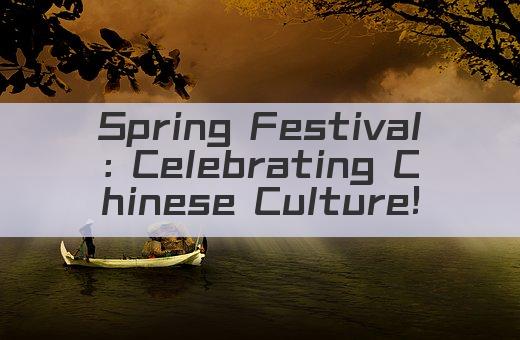Introduction to Spring Festival Culture
The Spring Festival, also known as Chinese New Year, is one of the most important traditional festivals in China. It is a time for family reunions, feasts, and the celebration of the arrival of spring. This festival has a rich history and cultural significance, which is reflected in various customs and traditions. In this article, we will explore the cultural aspects of the Spring Festival, focusing on its customs, foods, and decorations.
Customs and Traditions
The Spring Festival is marked by a series of customs and traditions that have been passed down through generations. One of the most significant customs is the Spring Cleaning, where families thoroughly clean their homes to sweep away bad luck and make way for good fortune. This is believed to bring prosperity and happiness in the coming year.
Another important tradition is the decoration of homes with red lanterns, couplets, and paper cuttings. Red, the color of happiness and good fortune, is prevalent in all decorations. The couplets, which are pairs of vertical red scrolls with auspicious sayings, are hung on doors to bring good luck. Paper cuttings, intricate designs cut out of red paper, are used to adorn windows and walls, symbolizing happiness and prosperity.
On the eve of the New Year, families gather for the Reunion Dinner, a feast that often includes a variety of traditional dishes. These dishes are not only delicious but also carry symbolic meanings. For example, dumplings, known as "jiaozi," symbolize wealth and prosperity because their shape resembles ancient Chinese money. Fish, called "yu," is another popular dish, as the pronunciation of "yu" sounds like "surplus," representing abundance and good luck.
Fireworks and Firecrackers
Fireworks and firecrackers are an integral part of the Spring Festival celebrations. They are set off to ward off evil spirits and attract good luck. The loud bangs and colorful displays are believed to scare away any negative energy and bring happiness and prosperity to the community.

Fireworks are typically set off at midnight on New Year's Eve, marking the beginning of the New Year. The sky is filled with vibrant colors, creating a festive atmosphere that is enjoyed by people of all ages.
Gift-giving and Visiting
Gift-giving is another important aspect of the Spring Festival. Red envelopes, known as "hongbao," are given to children and the elderly as a symbol of good wishes and blessings. These envelopes often contain money, which is believed to bring wealth and prosperity to the recipient.
Visiting friends and family is also a significant part of the festival. People dress in their best clothes and exchange greetings, such as "Gong Xi Fa Cai" (Wishing You a Prosperous New Year) and "Xin Nian Kuai Le" (Happy New Year). These visits are a time to strengthen family bonds and show respect for elders.
Conclusion
The Spring Festival is a time of joy, celebration, and reflection. It is a festival that brings people together, strengthens family ties, and celebrates the arrival of a new year. The customs and traditions of the Spring Festival are a testament to the rich cultural heritage of China and its people. As we continue to celebrate this festival, we honor the past and look forward to the future with hope and optimism.


发表评论
发表评论: